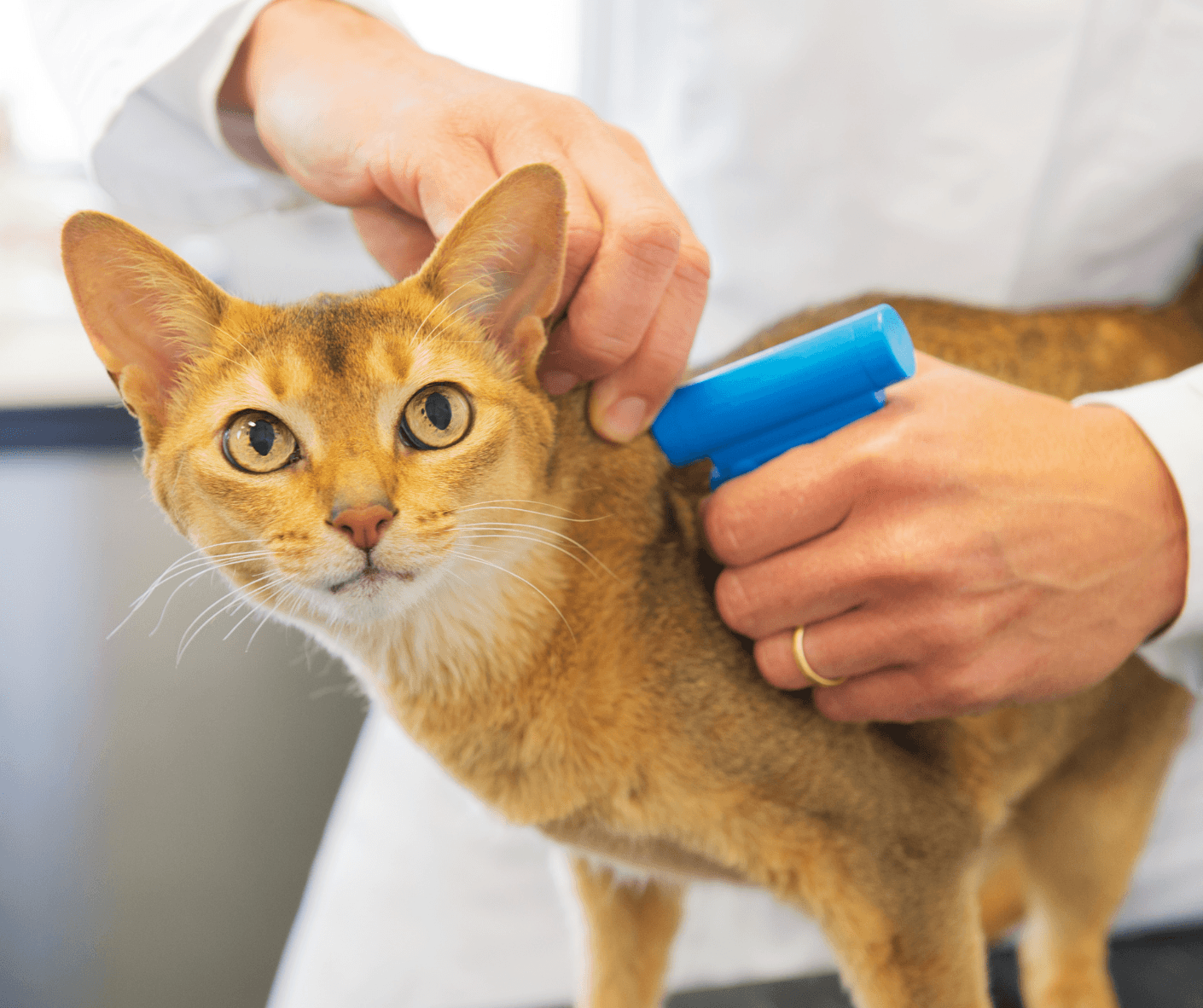May is National Chip Your Pet Month, recognized by the American Kennel Club as a month to educate responsible pet parents on the importance of microchipping your pet.
What Are Pet Microchips And How Do They Work?
Pet microchip implants are extremely tiny devices that are inserted into your pet, typically placed between the shoulder blades. Using radio-frequency identification, these microchips provide a lifetime of identification information and require no batteries or power source to remain active. When having a microchip inserted into your pet, you will be asked to provide your name, address, and phone number that will be associated with your pet’s chip ID number, as well as details about your pet, such as name, age, and a brief description. When the chip is scanned with a special reader, your pet’s microchip ID number will appear on the reader's screen. This number can then be used to look up the owner information you have provided, which is why it is crucial for pet parents to update their contact information on the microchip regularly. Most shelters and nearly all veterinary hospitals use a universal microchip scanner, making the process of locating a pet’s owners quick and easy, no matter where your pet has wandered off to! The ideal microchip is a fifteen digit ISO (International Standards Organization) ID, which is usually required for travel outside of the United States.

What Can’t a Microchip Do?
It’s not uncommon for pet owners to assume that their pet’s microchip acts as a “GPS” that will pinpoint their pet’s location, but that is far from the truth. Microchips are not GPS tracking devices and are meant to provide valuable information about the pet’s owner. For this reason, it is incredibly important to make sure that your microchip is not only set up in the microchip registry but that your own information is always up to date. Pet parents are responsible for updating their contact information in the registry each time they are changed. You can add other identifying information, such as your cat's breeds, or physical traits, to ensure a safe and easy reunion in case your pet gets lost.
Several pet care companies now offer GPS collar trackers, which can be used in addition to your pet’s microchip. While many use wireless networks or Google maps to provide tracking information, many require a monthly subscription fee, have a temporary battery life, and only range a certain number of miles. GPS collars alone are not enough to ensure your pet’s safety, and it is recommended that a microchip be placed as well.
Do Indoor Pets Need to be Microchipped?
Yes, absolutely. As pet parents, safety should be our top priority, and microchipping is our best hope at being reunited with a lost pet. All it takes is a split second for your pet to slip out the door and be lost. Fireworks, parties, loud noises, not closing the front door properly are all things that could lead to your kitty escaping. The return-to-owner rate for microchipped cats is 20 times higher than those that are not microchipped. Studies have shown that three out of four lost animals in a shelter were able to be reunited with their owners by scanning the microchip of the pet! It is also important to know that a microchip does not take the place of a collar. Speak to your veterinarian about safety and collars. Unfortunately over 80% of pets that are not microchipped never make it back to the original owner.

Will the Microchip Hurt My Pet?
Microchips are very small implants, and the insertion process and discomfort level are similar to receiving a vaccine. The needle is inserted underneath the skin in between the shoulder blades and is about the size of a grain of rice. It is always recommended that a veterinarian performs this procedure.
How Much Does a Microchip Cost?
Most veterinary hospitals will offer to microchip your pet when they are under anesthesia to be spayed or neutered. Microchips can range in price and can be as low as $25, depending on your location and provider. Usually, the cost of the microchip will include the initial setup fee but it’s crucial to ask for these details when your pet is having the procedure. Overall, the benefits of having a microchip outweigh the one-time cost of insertion.
Microchipping your pet is crucial to being a responsible pet owner, and having up-to-date information is essential! Even indoor cats should be microchipped, as there is always a risk that they may accidentally escape. When adopting a pet, ask if your adoption fee includes microchipping; if your pet has not yet been microchipped, ask about local low-cost clinics that offer this service.
Resources:
https://www.petmicrochiplookup.org/
https://todaysveterinarypractice.com/back-page-veterinary-viewpoints-importance-microchipping/
https://www.petmd.com/cat/centers/kitten/health/evr_ct_cat_microchips



